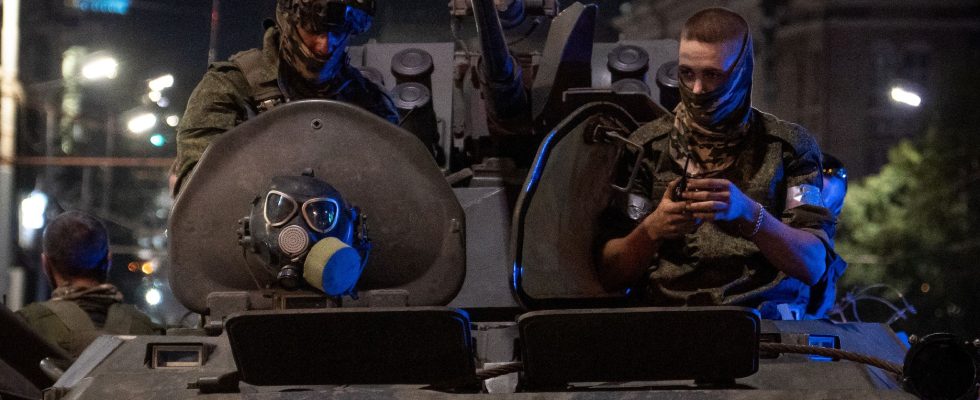If the departure of Wagner for Belarus can temporarily reassure the Ukrainians, it is the opposite effect for its neighbors in Eastern Europe. After Russia’s private militia rebellion against Moscow on June 23, mercenaries were redirected to the country controlled by Alexander Lukashenko following an agreement between Russian President Vladimir Putin and Wagner chief Yevgeny Prigojine. In total, thirteen columns of vehicles were thus seen reaching the vicinity of Assipovitch, about a hundred kilometers from the capital Minsk.
Officially, the militia is responsible for training the Belarusian army. A unique task announced, which hardly reassures the bordering States. On Friday July 28, an official from the Lithuanian Interior Ministry said that his country and Poland would be ready to close their borders with the allied country of Moscow in the event of threats from Wagner.
The fear of false migrants from Wagner
Indeed, the two member countries of NATO consider that the proximity of Wagner represents a risk for their national security. At the heart of Lithuanian concerns: the risk of seeing mercenaries posing as asylum seekers in order to cross the border of the European Union. In a statement, the Deputy Minister of Lithuania, Arnoldas Abramavicius, considered that it “could be groups of refugees, irregularly transferred migrants with the aim of causing some kind of unrest”.
“Considerations […] real”, affirms the Lithuanian leader, also shared by the Polish executive. The same day, it was the turn of the leader of the nationalist party in power Law and Justice (PiS) to express his fears. Jaroslaw Kaczynski thus judged that the Russian militiamen wish “to provoke various crises directed mainly against Poland”.
The solution put forward by the two countries would therefore be “the total isolation of Belarus”, according to Polish Interior Minister Mariusz Kaminski. President Andrzej Duda had already announced on Wednesday “reinforcements” of the Polish-Belarusian border, while believing that the Wagner threat also affects Lithuania and “potentially” Latvia, the third neighboring country.
This border area is however already “extremely limited” by reciprocal sanctions between Warsaw and Minsk, recalls AFP. For two years, both Poland and Lithuania have also built barriers along their border with Belarus and Russia, in particular to limit the passage of migrants.
Behind Minsk, a Russian intimidation campaign
The doubts raised by the Lithuanian and Polish governments are fueled by recent statements by the Belarusian President. On July 23, Alexander Lukashenko assured Vladimir Putin that he “kept” Wagner’s militiamen in the center of his country, while they “asked to go west […] in Warsaw, Rzeszów”.
A declaration which seems to be part of a campaign of intimidation by Moscow towards the countries of Eastern Europe which are members of NATO. Last week, Minsk also shared images of military exercises between Belarusian soldiers and Wagner militiamen in the city of Brest, which borders Poland.
Warsaw then mentioned for the first time the “potential threat” that Wagner represented for neighboring countries, while announcing the mobilization of a battalion of firefighters in the northeast of the country. In a note from July 23the American think tank Institute for the Study of War (ISW) nevertheless judged that in the absence of the mechanized vehicles returned to Russia, Wagner represents “no military threat” for Poland.
But even without Wagner, Belarus could itself become Moscow’s armed wing against NATO. On Friday July 28, this same think tank indicated that the construction of a hangar for Russian Iskander ballistic missiles had just been completed near the Belarusian town of Asipovich, according to satellite images. A technology capable of being fitted with “tactical nuclear warheads” if necessary.
